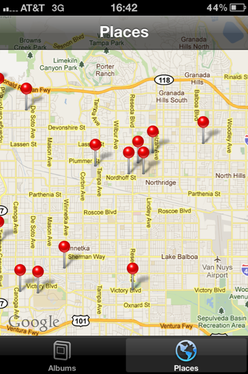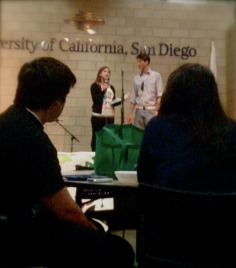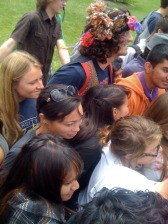If you live in the northern part of Northridge, the borders of Northridge technically define your community. Granada Hills South is a separate community which exists just north of Northridge. Both communities have news and their community journalism would focus only on news that took place within each respective city. So what of the residents that live on the border of the two? Do they only belong to one community? Do readers care more about news that happens across the city or across the street, even if it's technically in a different city? The end of one's personal community is not based on gerrymandered lines.
The app I am proposing would aggrogate (collect) content from news sources. Each piece would be geotagged, or marked with a code that corresponds with a point on an interactive Google map. Then, to see news, users would view the map closest to wherever they are (or would like to view news) and click on the markers showing where news has taken place.
Online community journalism has succeeded in large part by embracing the internet and social media. Most news outlets (as well as many other companies) have Facebook and Twitter accounts, which they use for updates, promotion, interaction with readers and crowd-sourcing. However, news outlets have failed to use a potentially game-changing technology called geotagging.
Geotagging adds geographical identification data to content such as photos and tweets. It uses the GPS in your mobile phone or laptop to automatically code content with the location.
The app I am proposing would aggrogate (collect) content from news sources. Each piece would be geotagged, or marked with a code that corresponds with a point on an interactive Google map. Then, to see news, users would view the map closest to wherever they are (or would like to view news) and click on the markers showing where news has taken place.
Online community journalism has succeeded in large part by embracing the internet and social media. Most news outlets (as well as many other companies) have Facebook and Twitter accounts, which they use for updates, promotion, interaction with readers and crowd-sourcing. However, news outlets have failed to use a potentially game-changing technology called geotagging.
Geotagging adds geographical identification data to content such as photos and tweets. It uses the GPS in your mobile phone or laptop to automatically code content with the location.

Imagine if this map (left) was your newsfeed. You click on each of the red markers to see what news comes from there. We have the tecnhology for this. This is actually a feature on my iPhone 4 where each picture you take is logged and placed on a map, as long as location services are turned on. Each photo has metadata, which the device recognizes and uses to place it on a Google Map. When clicking on a pin you can see how many photos were taken at that location, and by zooming in you can see more specific details about exactly where it was taken, within a few feet.
I see the future of both professional and citizen journalism using geotagging. I also see readers using a phone app to view news around where they are located, whether at home, work or traveling. This will not only affect the efficiency of community journalism, but readers will have faster, more open access to what is going on near them, propelling community journalism a format that is as quick and dynamic as the large online media outlets are today.
I see the future of both professional and citizen journalism using geotagging. I also see readers using a phone app to view news around where they are located, whether at home, work or traveling. This will not only affect the efficiency of community journalism, but readers will have faster, more open access to what is going on near them, propelling community journalism a format that is as quick and dynamic as the large online media outlets are today.
This scholarship is sponsored by ATTSavings.com



 RSS Feed
RSS Feed